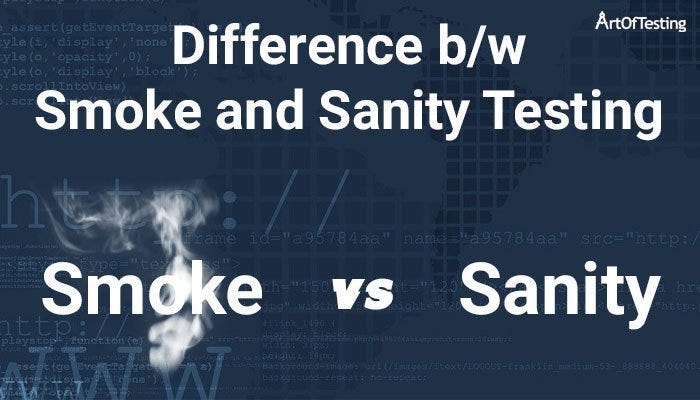
In this section, we are going to discuss what is smoke and sanity testing in Software Testing; and see the major differences between them.
In software testing, we will understand that any testing done at the initial phase of the SDLC (Software Development Life Cycle) is determined to be a cost and time-saving process.
Smoke Testing and Sanity Testing are a few of the significant types of testing, making sure that bugs and defects are exposed in the development cycle’s initial phases.
Usually, we all get muddle between the definition of Sanity Testing and Smoke Testing. Firstly, both testing is way different and executed throughout the different phases of a testing cycle.
It is essential to understand these testing methodologies and thus know the difference between them.
What is Smoke Testing?
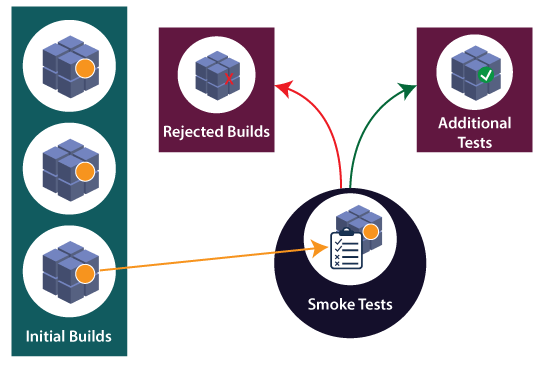
Smoke testing is an initial and essential step in software testing. It is a high-level testing process that is performed to verify if the most critical functionalities of the application are working correctly. It is called “smoke testing” because, in the hardware context, smoke might be generated if a major issue occurs. Similarly, if the smoke test fails, it indicates that there is a significant problem in the application.
It ensures that the application is stable enough to move on to the next stage of testing. If the smoke test fails, the development team can immediately address the issue and fix the problems. This helps to prevent the occurrence of more significant issues later in the development cycle, which could delay the project, cause problems for users, or even result in the failure of the entire application.
It can be performed either manually or using automation tools. In manual testing, the test engineer runs a set of predefined test cases that verify the most critical functionalities of the application. In automated testing, the tests are scripted, and the testing tool executes them automatically. The test cases are designed to be quick and high-level, providing a general overview of the software’s functionality.
The smoke tests cover the most important features of the application, such as login, search, and payment functionality. After the smoke test is passed, the development team moves on to more comprehensive testing, and if it fails, they address the issue immediately and re-run the smoke test.
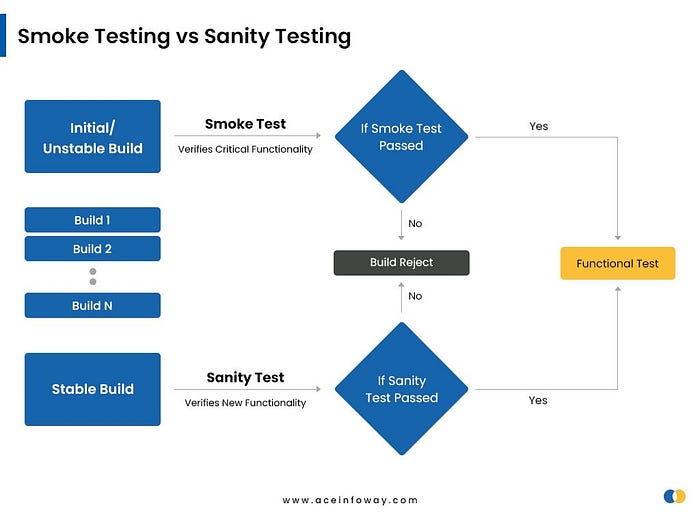
What is Sanity Testing?
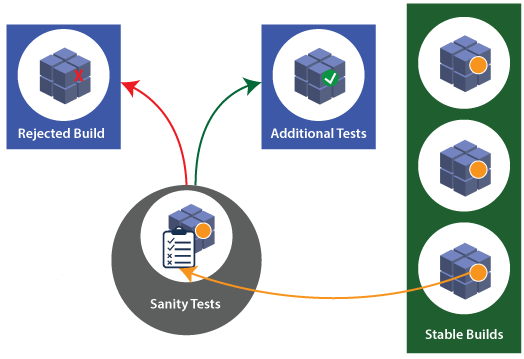
Sanity testing is a type of software testing that is performed to quickly verify if the newly added functionalities or changes have not adversely affected the application’s critical functionalities. It is called “sanity testing” because it focuses on testing the basic and most important functionalities of the application to ensure that it is still sane and working correctly.
It helps to identify whether the minor changes or newly added functionalities are working as expected, which ensures the overall quality of the application. Furthermore, it is an essential step in the development process as it helps to catch any potential issues quickly, preventing them from escalating into major problems.
Sanity testing is a relatively straightforward process that involves testing the essential functionalities of the application that are most likely to be affected by the changes made. The testing can be done manually or by using automation tools. The test cases are designed to be quick and targeted, ensuring that the critical functionalities of the application are working as expected.
The testing team, before moving on to more comprehensive testing, performs sanity testing to ensure that the application’s critical functionalities are still working correctly. Wherein the team verifies the basic functionalities such as login, search, and payment functionality, ensuring that they are not adversely affected by the changes made
Smoke Test VS Sanity Test
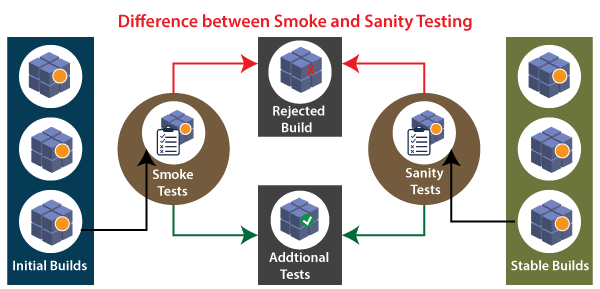
While both smoke testing and sanity testing is used to verify the functionality of the software, there are several key differences between the two:
- Smoke Testing is scripted, which means it can be documented, whereas the sanity testing is unscripted, which implies that it cannot be documented.
- Smoke testing is considered shallow and wide testing, and on the other hand, sanity testing is considered narrow and deep testing.
- Smoke testing takes all important features and performs high-level testing, whereas sanity testing takes some very significant features and performs deep testing.
- Smoke testing is executed as soon as the build is installed, and on the other hand, sanity testing is implemented as soon as the bug fixes are done.
Detailed comparison and differences listed here:
Sanity Testing Vs Smoke Testing: Understand The Difference
Whether you’re launching a new software or updating an existing one, thorough testing is crucial for providing the best user experience. At our quality testing services, we have the expertise to provide both smoke testing and sanity testing, ensuring that your software or web app is working flawlessly. Our team can help you deliver software that exceeds user expectations, so don’t let bugs or glitches hold you back.

No comments yet